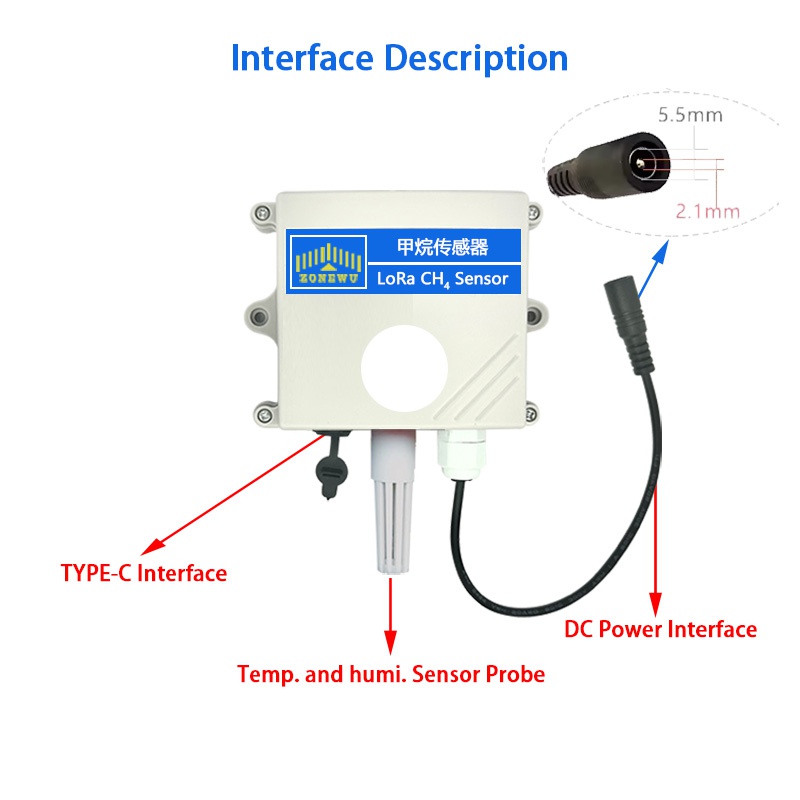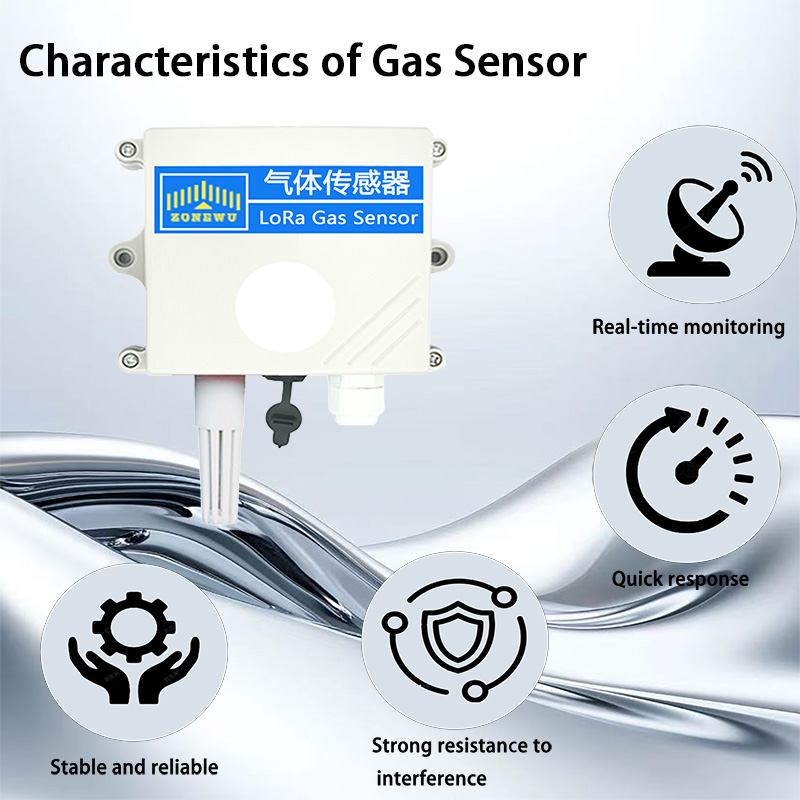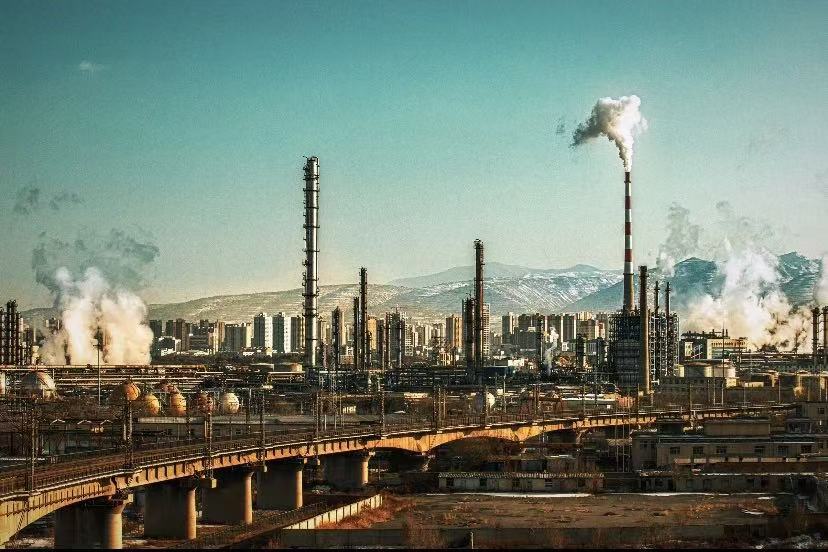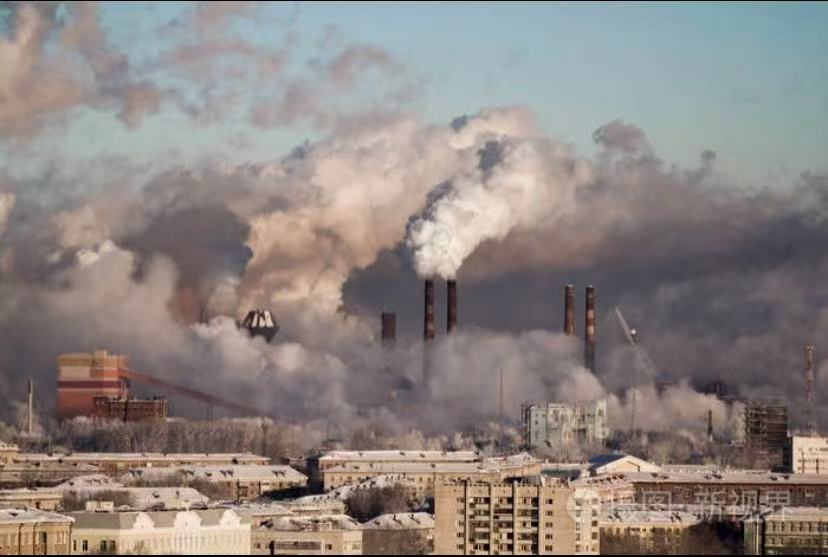xiamen ZoneWu LoRaWAN Wireless CH4 Sensor is awesome! It can collect, monitor, and transmit, with a high-sensitivity methane sensor built-in, fast response, stable and durable, resistant to water vapor interference, non-toxic, replaceable catalytic combustion sensor, can be used in dust environment, based on LoRa technology communication distance is still long.
Product Model :
LW302-CH4Power Supply Mode :
Battery or External DCFrequency :
CN470/IN865/EU868/RU864/US915/AU915/ KR920/AS923-1&2&3&4MAC Version :
LoRaWAN 1.0.3Mode :
OTAA Class A/CWeight :
120gDurable High-sensitivity LoRaWAN Wireless CH4 Sensor
xiamen ZoneWu LoRaWAN Wireless CH4 Sensor , an intelligent sensor that can be used in any environment, uses infrared to detect methane gas.
xiamen ZoneWu LoRaWAN Gas Sensor CH4 Sensor Features:
This device uses the principle of non-dispersive infrared (NDIR) to specifically detect hydrocarbon combustible gases in the air. It's like "identifying" the gas, which can precisely find the carbon-hydrogen combustible gas.
It selects gases with a "precision eye" and responds only to the carbon-hydrogen flammable gases to be detected; It is not dependent on oxygen and can function normally in places where there is little oxygen. Performance is stable, not prone to failure, and can last a long time; There is also a built-in temperature compensation function, which does not affect its operation regardless of the hot or cold weather.
It is particularly convenient to use, and if you were previously using a catalytic combustion element, you can simply replace it without having to go through the trouble of adjusting it.
It supports the standard LoRaWAN protocol, which can achieve long-distance communication, data can be transmitted far away, without worrying about distance restrictions.
In HVAC and indoor air data quality monitoring, it can detect the combustible gas in the air to ensure indoor safety and air health; When producing in agriculture and livestock, it can monitor the environment to ensure the safety of the growth environment of animals and plants. In the monitoring of industrial processes and safety protection, flammable gas hazards can also be promptly discovered to ensure the safety of industrial production.
This is an advanced principle, prominent advantages, simple use, strong communication and wide application of gas detection equipment, which can play an important role in many fields to ensure production and life safety.
Product Parameters
|
Power Supply |
5~28VDC |
|
Weight |
120g |
|
Operating Emperature |
-20℃~60℃ |
|
Measuring Principle |
Principle of Non Dispersive Infrared (NDIR) |
|
Lifespan |
> 5 years |
|
Measuring Range
|
CH4:0~100% LEL |
|
Temp:-40~+80 ℃ |
|
|
Humi:0~99.9 %RH |
|
|
Resolution Ratio |
CH4:1%LEL |
|
Frequency |
CN470/IN865/EU868/RU864/US915/AU915/ KR920/AS923-1&2&3&4 |
|
Mode |
OTAA Class A/C(Default: Class C) |
|
Reporting cycle |
External power supply:10min(Default reporting cycle) |
|
Communication Protocol |
LoRaWAN,LoRa TDMA Networking |
|
Equipment information (Reference) |
AppEUI:0000000000000001 DevEUI:aaaa202404150001 AppKey:00001111222233334444555566667777 MAC Version:LoRaWAN 1.0.3 |
Product Applications



Common knowledge of CH4
In the field of combustible gas detection, LEL and explosion limit are often mentioned, what does this mean
LEL is the lower explosive limit of a gas, expressed as a percentage. When a combustible gas, vapor of a flammable liquid, or combustible dust is mixed with air to reach a certain concentration, it will explode if it touches an open flame. This concentration range where an explosion can occur is called the explosion limit. In the area of combustible gas detection, the explosive limit is often used to indicate the hazard level. The explosive limit for each gas is different, for example, methane, which has a lower limit of 5% LEL and an upper limit of 16% LEL. Our LoRa methane sensors measure 0 to 100% LEL; The lower explosive limit of CO is 12.5% LEL and the upper limit is 74% LEL. The lower explosive limit of hydrogen is 4.0% and the upper explosive limit is 74.2%. You should know that if the concentration of various gases is less than the lower explosion limit or greater than the upper explosion limit, they will not burn or explode even when encountering air and open flame.
How to convert LEL (explosion limit) and VOL% (gas percentage concentration)
To convert the VOL% and LEL of a combustible gas into each other, the lower explosive limit of the gas must be known.Take methane, methane LEL is 4% VOL, its lower explosive limit is 5.0 VOL%, which is equivalent to 100% LEL = 5.0 VOL%.If you calculate the VOL% corresponding to 20% LEL, multiply 5.0 VOL% by 20%, and the result is 1.0 VOL%.
In simple terms, VOL% (gas percentage concentration) is equal to LEL (explosion limit) multiplied by the percentage concentration of the explosion limit. When the concentration of flammable gases in the air reaches its explosion lower limit value, we say that the explosion hazard degree of the flammable environment in this place is 100%.
What is the conversion relationship between ppm, VOL% and LEL
The meaning of VOL% is expressed in percentages, while the meaning of ppm is expressed in parts per million. It can be said that 10000ppm=1Vol%. Therefore, the conversion relationship between them is:
1ppm=0.00001x100VOL%,1VOL%=10000ppm
But PPM and LEL cannot be directly converted, LEL needs to be converted to VOL first, and then converted from VOL to PPM.
In common use, the volumetric concentration of oxygen transmitters is expressed in VOL, the volumetric concentration of combustible gas transmitters such as methane is expressed in LEL, and the volumetric concentration of toxic gas transmitters such as sulfur dioxide, phosphine, formaldehyde, etc. is expressed in ppm. In addition, the volumetric concentration of some gases in the air is also expressed in units such as ppb and ppt.
Application Scenarios

Industrial production
Waste gas emission monitoring: Conduct real-time monitoring of industrial waste gas emissions to ensure that waste gases meet emission standards and reduce pollution to the environment.

Environmental inspection
Air quality monitoring helps people understand air quality and protect the environment and health by detecting harmful gases such as sulfur dioxide.

Safety protection
In coal mines and tunnels, gas sensors detect toxic and harmful gases such as methane and warn against accidents.
A:Yes,we can provide you with OEM services and design housings and logos.
3.DO you offer free samples?
A:Sorry,we don't offer free samples. After ordering in bulk, we will deduct the sample fee from the second order.
Why Choose ZONEWU